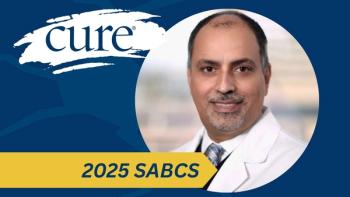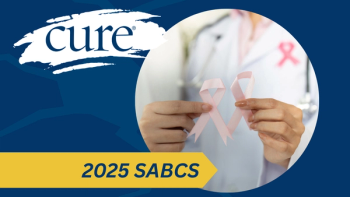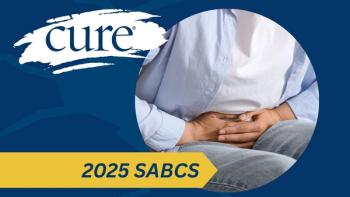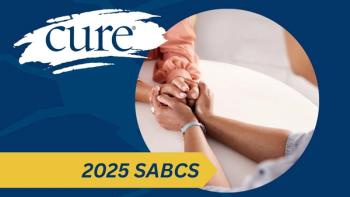
Could Integrative Oncology Make Your Life Better?
Just published, easy-to-understand clinical guidelines can help you figure out new ways to overcome fatigue, anxiety, nausea.
Tired? Stressed? Anxious?
Me too! The side effects of a cancer diagnosis, cancer treatment and posttreatment, and fears about the future are standard-issue concerns for many patients. They overwhelm one day, are manageable another and seem a distant memory on others. Oncologists may prescribe drugs, friends may suggest a particular herb they’ve read about, family members will “send hugs” from afar—but these days, there is actually a formal name for the way cancer patients may manage side effects. It’s called integrative oncology, and it incorporates both standard medical care/treatments and side effect management that features things like meditation, exercise and music therapy.
Thanks to research, patients and oncologists have clear guidelines about what behaviors could help manage specific side effects of cancer treatment. While research is still being conducted and data continues to add to our knowledge, newly updated 2017 clinical guidelines from the Society of Integrative Oncology (
This is exciting stuff for patients. For over two years now, I have talked with anyone who’ll listen about how exercise has helped me manage some side effects and how learning and practicing qi gong, which has meditative qualities, has helped alleviate anxiety. I had never heard the term “integrative oncology” before attending the Living Beyond Breast Cancer (lbbc.org) annual conference on metastatic breast cancer, but the effects of its growing acceptance are found in many areas, including at my hospital, where cancer patients can receive a massage and learn meditative techniques.
“Studies show that up to 80 percent of people with a history of cancer use one or more complementary and integrative therapies, but until recently, evidence supporting the use of many of these therapies had been limited,” says Heather Greenlee, N.D., Ph.D., assistant professor of Epidemiology at Columbia University’s Mailman School of Public Health and the first author on the published guidelines.
I’d call the updated review required reading for anyone curious about the value of things as varied as music therapy, soy, and electro-acupuncture. It can be found online at
Particularly nice for the person with little experience looking at scientific or clinical data — I know I have been overwhelmed at times by the information thrown at me in doctor’s appointments — is that the review includes a chart that clearly identifies what side effects are being talked about and the usefulness of each studied integrative treatment, providing easily found grades. If you ever received a report card, the grades are what you would expect: “Grade A indicates there is high certainty that the net benefit is substantial, while grade B indicates there is high certainty that the net benefit is moderate or there is moderate certainty that the net benefit is moderate to substantial. Grade C indicates that the evidence is equivocal or that there is at least moderate certainty that the net benefit is small. The lowest grades (D, H and I) indicate no demonstrated effect, suggest harm, or indicate that the current evidence is inconclusive, respectively,” write the paper’s authors.
Paying attention to the grades is particularly important since in the quest against cancer, we sometimes do things that may not serve us well long-term. “Clinicians and patients need to be cautious about using therapies that received a grade of C or D and fully understand the potential risks of not using a conventional therapy that may effectively treat cancer or help manage side effects associated with cancer treatment,” says Lynda Balneaves, RN, PhD, associate professor, College of Nursing, Rady Faculty of Health Sciences, Winnipeg, Canada, and president-elect of SIO. Integrative oncology does not mean you are not receiving standard treatment modalities; it incorporates both standard-of-care and treatments that may be less invasive (meditiation as well as an anti-anxiety medication, for example) or lesser known in the West (acupuncture, for example).
In addition to the table just mentioned, the clinical guidelines also include charts about what sort of training and licensure practitioners of these integrative treatments could or should have. That chart is followed by in-depth descriptions about items studied, from Acetyl-L-carnitine to yoga, and overviews about the side effects managed and why certain integrative treatments are (or are not) recommended.
There is a lot of useful information!
Fortunately for those of us with shorter attention spans (or just a love of PowerPoint-style presentations), the paper, SIO and even the NIH (
“ - Anxiety and stress reduction: music therapy, meditation, stress management and yoga
- Depression and mood disorders: meditation, relaxation, yoga, massage and music therapy
- Quality of life: meditation and yoga
- Chemo-induced nausea/vomiting: acupressure and acupuncture
- A lack of strong evidence supporting the use of ingested dietary supplements or
botanical natural products as part of supportive care and/or to manage breast cancer
treatment-related side effects”
Since 80 different therapies were analyzed, the complete chart provides much more
information.
If you are at all interested in incorporating integrative techniques into your treatment or posttreatment life, any of the sites mentioned in this article are great places to find fact-based, scientifically-reviewed information that could help you improve the side effects of living with cancer, as is this very publication at curetoday.com





